Art of the Islamic and Indian worlds including rugs and carpets at bi-annual autumn sale at Christie's
LONDON.- Christie’s announces the bi-annual Autumn sale of Art of the Islamic and Indian Worlds including Rugs and Carpets, a live auction at Christie’s King Street, London, on 26 October. The sale offers a curated selection of carpets, ceramics, manuscripts, textiles, works on paper and metalwork from the Islamic world. With objects originating from the 9th century to the 20th century and featuring a diversity of artistic traditions, the lots offered come from a geographical area stretching from Spain through to Central Asia, highlighting the global reach, influence and longevity of Islamic culture and celebrating the high standards of craftsmanship that continue to be prized by collectors today.
A large Khorassan Bronze Incense Burner in the form of a lion, North East Iran, 12th century, (estimate £400,000-600,000). Lions have been a symbol of power and authority since prehistoric times and in Iran the lion was an important symbol from as early as the Achaemenid period. This incense burner, is the second largest known example of an incense burner of the form to exist in the cast technique.
A Khorassan Bronze Incense Burner in the form of a lion, North East Iran, 12th century, 34.2cm high; 37.5cm long. Estimate £400,000-600,000. Photo courtesy of Christie's.
An Iznik Pottery Dish, Ottoman Turkey, circa 1585-90 (estimate £70,000- 100,000) This is an exceptional example of an Iznik dish dating to the second half of the 16th century.
An Iznik Pottery Dish, Ottoman Turkey, circa 1585-90. Estimate £70,000-100,000. Photo courtesy of Christie's.
A Mongol 'Cloth of Gold' silk and metal thread Lampas panel, Central Asia, 13th century, (estimate £30,000-50,000), a very rare surviving textile using gold threads and the lampas technique. Such textiles would have been used for outer garments or for interior decoration of tents and royal dwellings.
A Rare Gilt-Copper (Tombak) Helmet, Ottoman Empire, late 16th or early 17th century, (estimate £150,000-200,000). This would have been used for Royal and ceremonial court occasions or on parade. There are only a small number of known surviving examples of tombak ceremonial helmets of such high quality and beauty.
A Rare Gilt-Copper (Tombak) Helmet, Ottoman Empire, late 16th or early 17th century Estimate £150,000-200,000. Photo courtesy of Christie's.
A Horse and Three Grooms, attributed to Mukhlis, Mughal India, circa 1575-90, (estimate, £300,000-500,000). Attributed to the highly celebrated Indian painter Mukhlis, very few paintings have survived that are signed by the artist, most of which were Imperial commissions under the rule of Emperor Akbar (r. 1556-1605). The artist famously was one of the principal artists responsible for illustrating the impressive Hamzanama manuscript, many folios of which are in the V&A Museum in London.
A gilt, gessoed and painted 'Damascus room', Ottoman Syria, dated AH 1205/1790-1 AD (estimate, £40,000-60,000). The Damascus Room is a residential winter reception chamber typical of the late Ottoman period in Syria, with its large scale and refined decoration suggesting it was part of the house of an important, affluent family, and used for entertaining. Other examples are in the Louvre Abu Dhabi, The Metropolitan Museum in NYC and the V&A Museum in London.
A gilt, gessoed and painted 'Damascus room', Ottoman Syria, dated AH 1205/1790-1 AD. Estimate £40,000-60,000. Photo courtesy of Christie's.
An important copy of the Futuh al-Haramayn, signed Mir Hadi ibn Mir Ibrahim, Abu Qubays, Mecca, Saudi Arabia, dated AH 1003/1594-95 AD (estimate, £20,000-30,000). A travel guide for the Hajj pilgrimage this includes prayers for different stages of the journey to Mecca and Medina. This copy is particularly important in that it was written on Jabal Abu Qubays, one of the holiest sites in Islam, and includes 18 paintings which also date from the same time as the manuscript text.
An important copy of the Futuh al-Haramayn, signed Mir Hadi ibn Mir Ibrahim, Abu Qubays, Mecca, Saudi Arabia, dated AH 1003/1594-95 AD. Estimate £20,000-30,000. Photo courtesy of Christie's.
A Sword (Tulwar), and Scabbard from the personal armoury of Tipu Sultan (r. 1782-99) Mysore, Deccan, India, dated Mauludi 122[4]/1796-97 AD (estimate £1,500,000-2,000,000). This sword and another offered in the sale have an impeccable unbroken provenance, coming from the collection of Charles, the 1st Marquess and 2nd Earl Cornwallis to whom they were presented in the 18th century. The sale brings to light two previously unrecorded swords of the 'Tiger of Mysore', Tipu Sultan, presented to the central figure in the consolidation and regulation of British power in India. The sword has been passed down through the family since the 18th century when came into the possession Charles, 1st Marquess Cornwallis and 2nd Earl Cornwallis KG PC (1738-1805) after the death of Tipu Sultan at the fall of Seringapatam since the 18th century. The proceeds from the sale will be used for repairs on the Port Eliot estate.
A spokesperson for the Port Eliot Estate comments, ‘These swords, previously belonging to Tipu Sultan and have been passed down through the Eliot family since they were presented to Charles, 1st Marquess Cornwallis and 2nd Earl Cornwallis KGPC (1738-1805) in the late 18th century. The proceeds from the sale will be used for repairs to the Port Eliot estate. It is hoped this restoration will safeguard the future of the house for the next generation and for the public to continue to enjoy this magnificent Cornish estate for many years to come’.
Sara Plumbly, Head of Department, Art of the Islamic and Indian Worlds comments, ‘It is a real pleasure to bring to the market this exceptional sword, a weapon of spectacular craftsmanship that was clearly seen as one of the most important of Tipu’s swords after the fall of Seringapatam. It is one of a group of three related swords – the others having been presented to equally significant figures at the time, Edward, 1st Earl of Powys and Governor of Madras from 1798-1803, and King George III. The rest of the sale includes a number of important works of art from across the Islamic and Indian Worlds. Amongst others, highlights include an Ottoman tombak helmet of spectacular craftsmanship and a Mughal painting of Grooms shoeing a horse by the Imperial artist Mukhlis.’
A Sword (Tulwar), and Scabbard from the personal armoury of Tipu Sultan (r. 1782-99), Mysore, Deccan, India, dated Mauludi 122[4]/1796-97 AD. Estimate £1,500,000-2,000,000. Photo courtesy of Christie's.
The forthcoming sale includes over eighty rare and collectible rugs and carpets, with examples from the oases towns in East Turkestan, the silk workshops of the master weavers in Istanbul, to the village looms in the Caucasus and central Anatolia.
Leading the sale, is The Baron Edmond de Rothschild Royal Safavid red- ground 'palmette and bird' carpet, possibly Qazvin, North Persia, third quarter of the 16th century, 16ft.3in. x 7ft. (494cm. x 213cm), (estimate £2,000,000–3,000,000). Likely woven between 1565-1575 by skilled artists using the finest materials, this court carpet, which survives in extraordinary condition with a richness of colour which belies its age, was produced during the 'Golden Age' of carpet weaving under the Safavid ruler, Shah Tahmasp. Today, most examples of this quality are found in museums with just a few remaining in private hands. This carpet has graced the collections of some of the greatest patrons and collectors which include Baron Edmond de Rothschild and Ann and Gordon Getty.
The Baron Edmond de Rothschild Royal Safavid red-ground ‘palmette and bird’ carpet, possibly Qazvin, North Persia, third quarter of the 16th century, 494cm. x 213cm. Estimate £2,000,000–3,000,000. Photo courtesy of Christie's.
In contrast to the refined Persian craftsmanship is a visually arresting central Anatolian village rug, probably Karapinar, 17th century, (estimate £80,000-120,000). One of only five known examples of this design, this rug was a cherished favourite of James Ballard, the renowned American entrepreneur and carpet connoisseur who, in 1922, gifted a significant part of his extensive collection to the Metropolitan Museum of Art in New York, which today makes up almost a quarter of their collection.
A central Anatolian village rug, probably Karapinar, 17th century. Estimate £80,000-120,000. Photo courtesy of Christie's.
A Silk Yarkand carpet, East Turkestan, late 18th/early 19th century, (estimate £50,000-70,000). Woven in the oases town of Yarkand, a trading post on the silk route, the genus of this striking design of staggered bold octagons is a blend of early Chinese silk textiles from the east and the tribal Turkoman guls in the west.
A Silk Yarkand carpet, East Turkestan, late 18th-early 19th century. Estimate £50,000-70,000. Photo courtesy of Christie's.
A unique Qajar Pictorial Bakhtiari Khan Carpet, West Persia, dated AH 1329/1911-12 AD, woven for the last of the Bakhtiari chieftains, it depicts the fashionable European tastes that reached Persia through the development of photography at the turn of the century. The carpet passed to the collection of the esteemed living Iranian artist, Parviz Tanavoli before it was bought by the former Italian Ambassador whilst living in Tehran, (estimate £40,000-60,000).
A unique Qajar Pictorial Bakhtiari Khan Carpet, West Persia, dated AH 1329/1911-12 AD. Estimate £40,000-60,000. Photo courtesy of Christie's.
Louise Broadhurst, International Head of Rugs and Carpets comments, ‘Christie’s is honoured to offer the magnificent masterpiece of Safavid weaving that has graced the collections of some of the greatest patrons and collectors that include Baron Edmond de Rothschild and Gordon P. Getty. With so few examples remaining in private hands of this quality it is a rare opportunity to appreciate such a superbly preserved icon of Safavid art, first hand. The sale showcases further extraordinary examples of carpet weaving from an unpublished early 16th century ‘Lotto’ rug to the cherished 17th century central Anatolian rug of the American connoisseur James F. Ballard, and more recent 19th century carpets perfect for today’s interior decorators.’
The Art of the Islamic and Indian Worlds including Rugs and Carpets view is open to the public from 21 - 25 October at Christie’s, King Street, London. The auction will be followed on the 27 October by the live sale of An Enchanted Eye – Indian Paintings from the Collection of Toby Falk.

/https%3A%2F%2Fprofilepics.canalblog.com%2Fprofilepics%2F1%2F0%2F100183.jpg)
/https%3A%2F%2Fstorage.canalblog.com%2F03%2F02%2F119589%2F96711876_o.jpg)
/https%3A%2F%2Fstorage.canalblog.com%2F11%2F31%2F119589%2F94773502_o.jpg)
/https%3A%2F%2Fstorage.canalblog.com%2F20%2F83%2F119589%2F94772815_o.jpg)
/https%3A%2F%2Fstorage.canalblog.com%2F26%2F72%2F119589%2F75604929_o.jpg)
/https%3A%2F%2Fstorage.canalblog.com%2F59%2F60%2F119589%2F26458628_o.jpg)
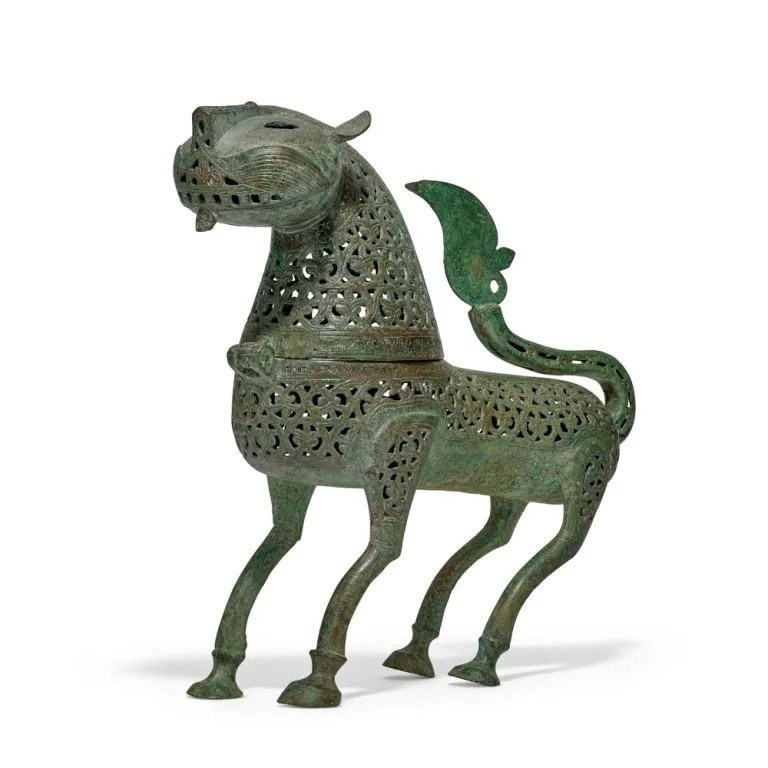


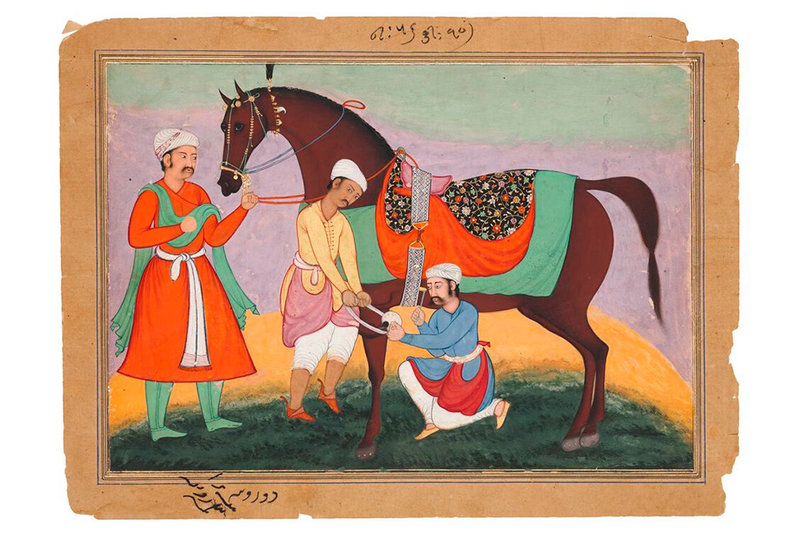




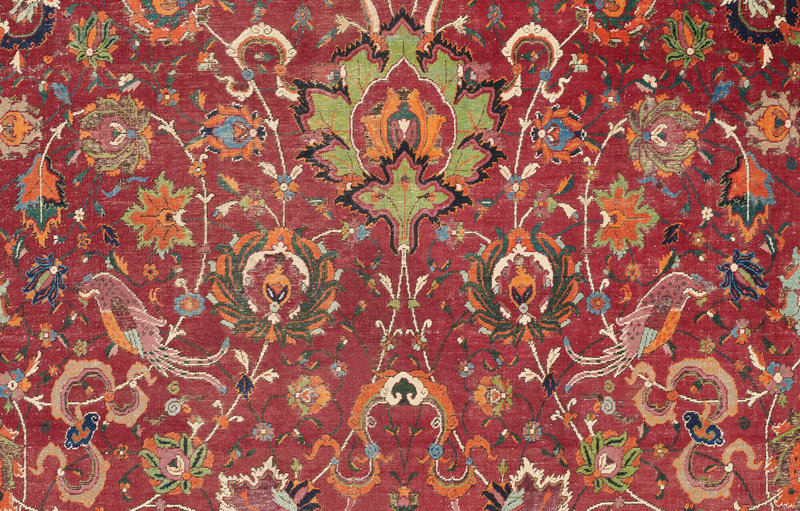
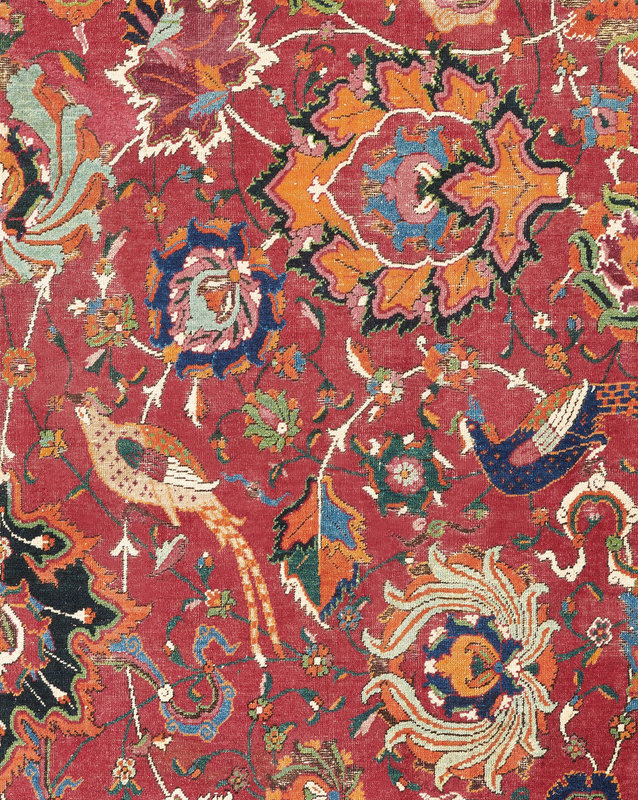
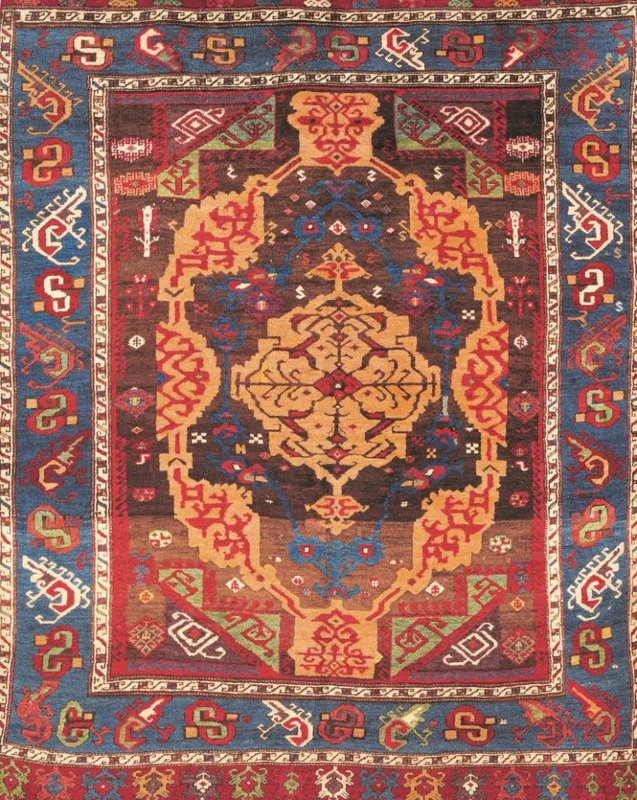
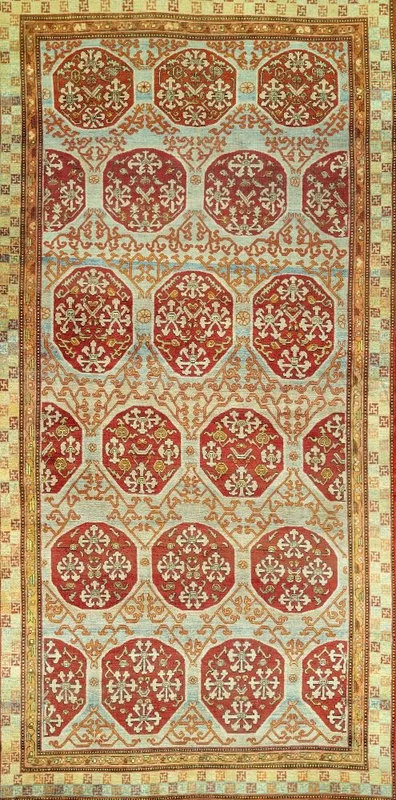
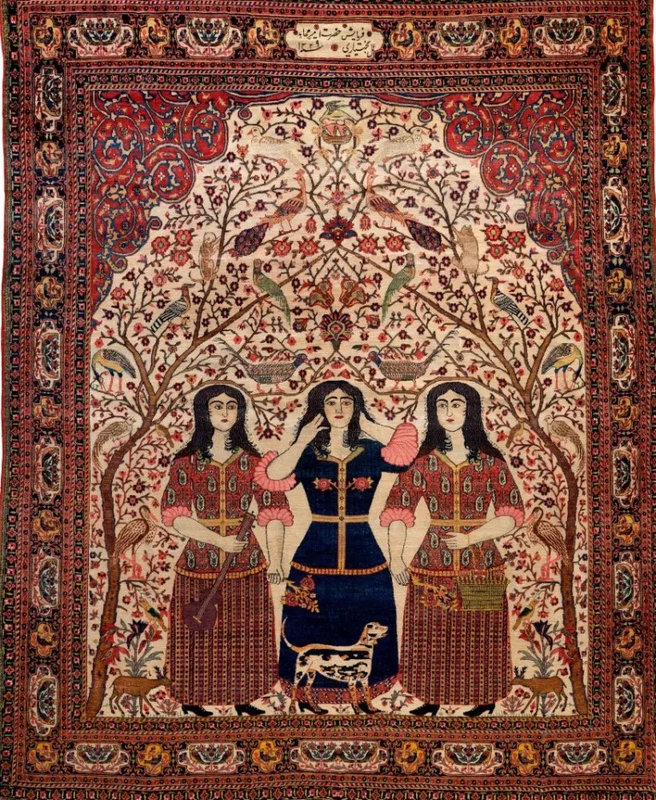


/image%2F1371349%2F20240406%2Fob_b23648_434058570-1644317966338216-88086167391.jpg)
/image%2F1371349%2F20240403%2Fob_6d5ae7_dp-28103-001.jpg)
/image%2F1371349%2F20240229%2Fob_8f31f9_431013694-1625286614908018-33034430839.jpg)
/http%3A%2F%2Fstorage.canalblog.com%2F79%2F20%2F119589%2F129837997_o.jpg)